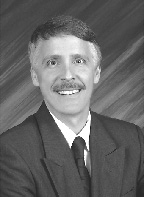Energy and Environmental Protection (DEEP) released a Report on Comprehensive Evaluation and Transformation of the Connecticut Cleanup Program in response to Public Act 11-141 on December 21, 2011. DEEP was tasked by P.A. 11-141 with making "recommendations for "a more streamlined or efficient remediation process." This transparent, public-private dialogue for a transformed cleanup process was led by DEEP and began on June 27, 2011. DEEP is now reaching the end of the "visioning" process and has proposed a 21st century Draft Vision and Conceptual Design for a Transformed Cleanup Program.
This is a big change in cleanup regulations for Conn. property owners. On January 10th, Graham Stevens of DEEP presented an Executive Summary of the draft vision and conceptual design for the transformed cleanup program to an audience estimated at 100. The conceptual design proposed at the hearing involved terminating the Connecticut Property Transfer Act, and consolidating 16 different statutory authorities that govern cleanup or other related action or maintaining pollution into a unified statute. He then opened the meeting for discussion and he listened to early feedback from several stakeholders in attendance.
The good news is that more written feedback on the vision statement and the conceptual design by email is encouraged by DEEP, especially from bankers, developers and responsible parties. If you have been on the sidelines on this legislative rule transformation process, DEEP is encouraging you to access the website and email your comments now.
DEEP has released the Workgroup Reports and public comments (over 200 pages in total) on the Stakeholder Input and Public Participation DEEP webpage: www.ct.gov/dep/cwp/view.asp?a=2715&q=481490&depNav_GID=1626
The Conceptual Design proposed thus far will change how real estate owners and developers operate, buy and sell properties with soil and groundwater contamination enter and exit the DEEP clean up regulatory process in the years ahead. If you own real estate in Connecticut you need to read DEEP's Executive Summary and consider making written comments with your legal and environmental team to DEEP on their Vision and their Conceptual Design using the DEEP website.
CT DEEP RSRs Transformation 2012 Update:
DEEP is in the process of developing "pollution release-based" regulations like a road from spill release to regulatory closure that you drive on with a series of on ramps and exit ramps. The concept design involves multiple entrances and multiple exit strategies, coined as the three "Rs" or the R3 Program (Release/Report/Remediate). This is not the time for you to be parked in the rest area.
The proposed regulatory changes necessary to implement the vision are to be submitted to Governor Malloy and state legislature for review. DEEP has concluded that under the current disjointed regulatory systems for cleanup and pollution maintenance no realization of economic value benefit to the property owner until a property has exited the cleanup program. DEEP has concluded that it takes too long and has become too complicated for many sites to achieve that project exit goal, causing economic hardships, a stigma to property values and delay of property development.
Therefore, the conceptual program under consideration has been designed with the goal of creating the following attributes:
* All cleanup programs will be combined and regulated under a unified program;
* Entrance into the R program will be through a "release-based reporting system" (to include historical releases);
* The new program will provide for earlier and multiple exits, including the use of risk-based off ramp exits and exits based on site-specific risk criteria (which would require risk assessors at DEEP and your consulting firm to perform these risk assessments)
* The program will be largely self-implementing with clearer obligations and timeframes for achieving cleanup goals, and balanced by a more rapid review and auditing program by DEEP
* DEEP will allow for more public participation and transparency with data being made available to stakeholders (web-based searchable data files, reports published online, etc.)
* The program will ultimately result in responsible parties transitioning out of the burdensome Connecticut Transfer Act.
The voluntary cleanup program would remain in place and closures under R3 will be largely self-implementing and completed through expanding the LEP program. In order for actions completed under the new regulations to provide more value to property owners in a quicker time frame, DEEP proposes developing a tier-based system for tracking sites as they move through the system and achieve various cleanup mile posts.
Wayne Cobleigh, CPSM is a manager of project development at GZA GeoEnvironmental, Inc., Glastonbury, Conn.
Tags:
Conn. Dept. of Energy and Environmental Protection discusses conceptual design for transformed cleanup program
January 26, 2012 - Spotlights








